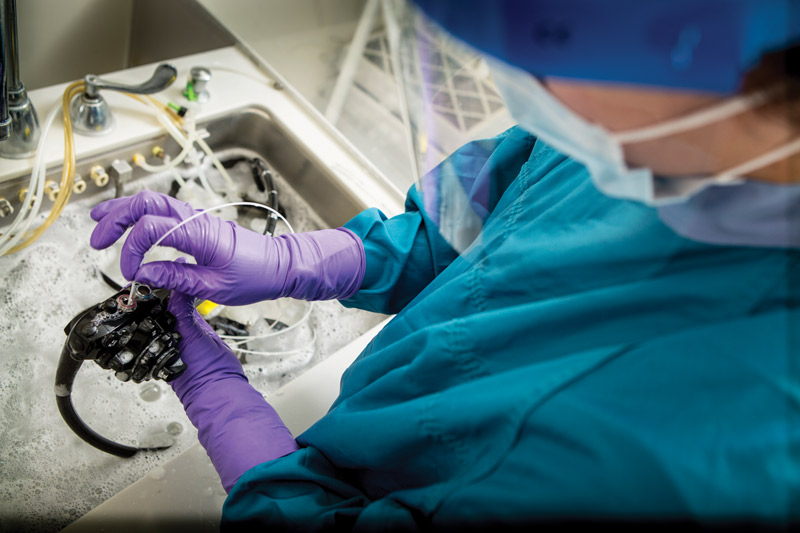
Endoscopy Cleaning Protocol
Clean the external surface of the endoscope with detergent using soft cloths, sponges, or brushes. Flush and brush all accessible channels to remove debris and other contaminants.
Hard-to-clean areas or accessories should be cleaned with an ultrasonic cleaner. After cleaning, rinse with clean water to remove the detergent on the endoscopes.
Rinsing includes flushing the endoscope, channels, and all accessories with sterile water.
High-level disinfection is recommended after the cleaning and rinsing processes. The endoscope and its components should be completely immersed in a high-level disinfectant solution, ensuring that all channels are well perfused. The selection of high-level disinfectants should be based on US Food and Drug Administration (FDA), Conformité Européene, or Korean Food and Drug Administration approval. The appropriate exposure time and temperature for high-level disinfection are specific to each disinfectant and its concentration. An automated endoscope reprocessor can be used for high-level disinfection.
After disinfection, the endoscope, channels, and all accessories receive a final rinse with sterile water.
The endoscopic channels are dried by flushing with forced air and ethyl or isopropyl alcohol (70% to 90%).
Storage requires keeping the endoscopes in a safe and sterile environment, usually hanging the endoscopes in a vertical position without touching the floor.


